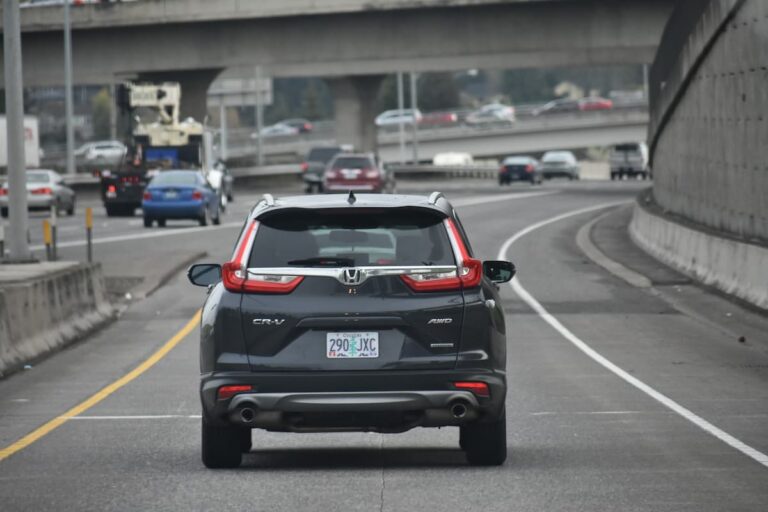How To Get Rid Of The SRS Light On A Honda Civic?
Honda Civics are popular, reliable vehicles that, with regular maintenance, stay in good shape for a long time.
Occasionally, you might see a dashboard warning light if you have issues under the hood.
But not all warning lights indicate engine trouble. Some point to problems with other essential vehicle parts, such as the airbags.
In a Honda Civic, the SRS light indicates a problem with one of the airbags. If it appears, take your vehicle to a mechanic to check your airbags before resetting it. To reset the SRS light, disconnect the battery from the car for 30 seconds, then reconnect it.
What is the SRS Light on a Honda Civic and How to Reset it?

The SRS light in your Honda Civic is located on the dashboard. It’s one of the vehicle’s safety features and indicates a problem with one (or both) of the airbags.
If you’re in a collision and the airbags fail to inflate and protect you, you could be seriously injured or worse.
When this warning light comes on, take the car to a mechanic. The airbags and the electrical system need to be checked – occasionally, electrical issues can activate the light unnecessarily.
If problems are discovered, a mechanic will resolve them before resetting the SRS light.
In Honda Civics produced before the year 2000, it’s common for the light to come on for no reason. Regardless, it’s still wise to have someone inspect the airbags, just in case.
Resetting the SRS light isn’t difficult, but you need to know what to look for. On older vehicles without dash screens, there aren’t any buttons to reset it quickly.
The first way to reset it works best on models before 2000. You need to turn the engine off and disconnect the car’s battery.
Leave it disconnected for roughly 30 seconds, reconnect the battery, and turn the car on. It should reset the SRS light.
Alternatively, you can use a paperclip to reset the light.
Remove the dash panel and locate the large, female, yellow-headed plug (the power plug for the SRS light).
Find the blue service check connector under the glove box. It should have a blue head and two pin holes to insert your paperclip.
Insert a bent paperclip into the plug. One end into each hole will work.
Turn the key in the ignition to power on the electronics, but do not turn it far enough to start the engine.
The SRS light will remain on for about 6 seconds, then turn off. As soon as it turns off, quickly disconnect the paperclip from the plug.
It will turn back on again after you disconnect the paperclip. When it comes back on, reinsert the paper clip and wait for it to turn off. Once it turns off again, remove the paperclip.
You may or may not need to repeat this process more than twice. It can be tricky to get the right timing.
When the reset is complete, the SRS light will flash twice as it turns off. Turn off the car, then start the engine to verify that the light has been reset and remains off.
The paperclip method should work for all Honda Civic models made between 2000 and 2010. Models produced after 2010 should have a reset button in the dash interface.
What If the SRS Light is Still On After Reset?
Sometimes, the reset will not work, or the light will blink to signify a reset but continues to light up anyway. In that case, it’s very important to have a mechanic inspect your airbags to confirm they function properly.
It could also mean the system is receiving an error from elsewhere in the vehicle. If the steering wheel, gauges, or seats are disconnected when the car starts, your Civic could read it as an SRS issue.
It could also just mean you have a bad SRS module.
You can troubleshoot the error from the code given by the SRS light. It will use long and short blinks to indicate a number between one and nine.
When you insert your paperclip, turn the ignition on and wait for the SRS light to give you a code.
The most common codes are:
- The numbers 1 or 2 indicate a problem with the driver or passenger airbag.
- Long blinks numbering 5, 6, 7, 8, or 10 suggest the error is in the SRS module itself.
- A 9 means a problem with the power supply.
Several other codes could appear; this site can help you decipher the one from your warning light.
Can I Ignore My SRS Light?

It isn’t safe to ignore an SRS warning light, especially the first time it comes on. Airbags are one of the most important safety features of the car.
That said, if you’ve had your airbags checked recently and they’re in good working condition, you may be able to ignore the SRS light.
Resetting the light isn’t difficult – once you’ve verified there isn’t a real problem, you can reset it.
Additionally, older Civics are more likely to have an error in the module that activates the SRS light unnecessarily.
If your Civic was produced before 2001 – and you can safely ignore the light – you can do a battery reset. For 2001-2010 Civics, the SRS light can be reset with the paperclip method.
Models released after 2010 should provide diagnostic information and indicate whether the issues are with the airbags or the SRS module.
The safest bet is not to ignore the SRS warning light and have a mechanic inspect your airbags.
Conclusion
You can reset the SRS light on a Honda Civic pretty easily.
On models older than 2000, disconnect the battery for 30 seconds before reconnecting it and starting the vehicle. With models produced between 2000 and 2010, use a paperclip to reset the system.
Newer vehicles should be able to provide diagnostic information indicating the source of the error.
Unfortunately, SRS warning lights are common with Honda Civics and usually just need to be reset. To err on the side of caution, you should have a mechanic inspect your airbags anyway.






